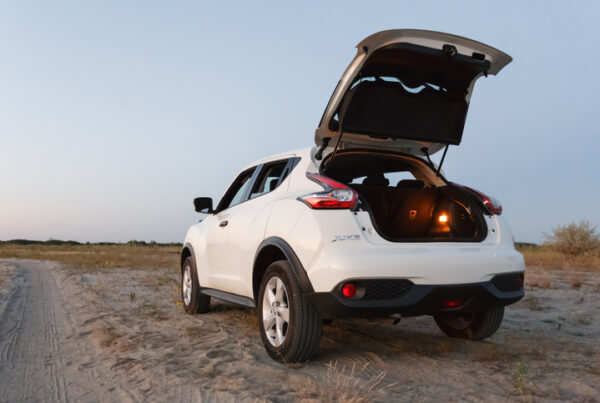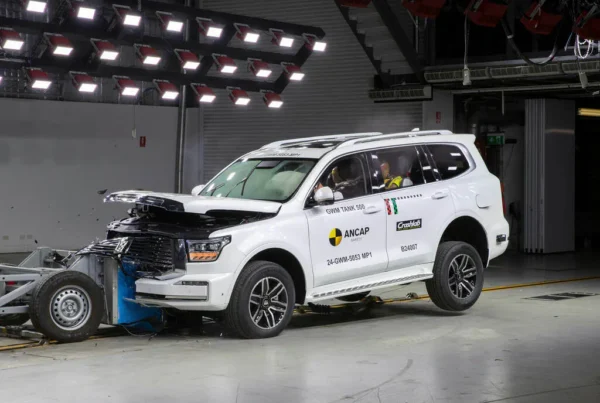Safety affects everything in fleet, from operations, vehicles, drivers, and other road uses. Every fleet manager understands the importance of safety and its place as a key element of operating a fleet.
Cornette Smith, Fleet Manager at Syngenta ANZ has shared with us a fleet manager’s approach and appreciation for driver safety.
Can you tell me a bit about your role and how long you’ve been working as a fleet manager?
In 2012, I started to assist with the ordering of vehicles by working with a Fleet Management Organisation (FMO). I quickly discovered that there is more to fleet management than just ordering a vehicle and saw the opportunity to build the fleet support role into a role that led to my appointment as Fleet Manager within Syngenta ANZ.
At Syngenta, I focus on maximising the efficiency of our fleet to increase the overall safety of our TOT drivers and ensure productivity and overall cost savings for the business. This also allowed me the opportunity to build a much stronger cross-functional relationship with our ANZ HSE Manager.
I ensure Syngenta meets compliance requirements and work to introduce better fit-for-purpose vehicles that reduce the vehicle choices and consequently also ensure fairness and satisfied internal customers part of the ANZ Syngenta Fleet.
By ensuring a well-managed fleet, I directly contribute to better employee retention and more satisfied and relaxed employees, and I am proud to be able to do that.
Do you enjoy working in the industry and what have been some highlights (personal and professional)?
I love working in the industry, but it is not without its challenges. Fleet Management is an ever-evolving occupation and never boring. During my time as Fleet Manager, I experienced Fleet Management shifting from only asset-based management to include financial, analytical, business, and administrative aspects. My appointment from the fleet support role to Fleet Manager is one of my personal highlights. I believe that personal and professional highlights go hand-in-hand with building a better you by having the support and trust of those around you, setting goals, learning new skills, and further developing the individual qualities that make us who we are.
Have you seen an example of very successful driver safety strategies? What do you believe made it work better than others?
As a global company with more than 30,000 employees, Syngenta’s priority the health and safety of our people. At Syngenta ANZ we pride ourselves to have a good Vehicle Safety Policy that focuses on driver licence validation, driver fitness and fatigue management, mobile phone usage, vehicle maintenance, speeding, regular driving training, and an excellent investigative accident process that not only focuses on what went wrong, but what can be done differently to ensure better safety for all, employees, their families, and the community. Regular safety shares with all employees are crucial for driver safety to extend well beyond just the traditional fleet. Changing the conversation by talking about “driver safety” as opposed to “fleet safety” or “fleet risk management” improves the collective mindset and culture in the business. In ANZ the aim is to focus on people as opposed to the vehicle.
How do you see the future of driver and vehicle safety, be it autonomous, early detection and correction systems, etc?
Car safety technology will play a greater role when choosing a fit-for-purpose vehicle. New technology such as traffic control systems, artificial intelligence, the use of telematics, and automotive technology to improve driver safety is exciting.
What kind of safety and training do you offer drivers?
Employees required to drive a motor vehicle or motorbike as part of their role must attend an appropriate defensive driver training course. In the case of a motor vehicle, a recognised defensive driver training course is imperative.
Drivers who are assessed as being at risk due to a history of poor driving behaviour must undergo appropriate remedial training and be re-assessed.
Syngenta also ensures that employees are:
- trained in the Syngenta ‘Safe Driving Golden Rules’ within one month of joining the organisation,
- within 3 months of joining the organisation the employee must undertake a defensive driver training or rider training course with an approved provider,
- frequent drivers and/or field-based staff must attend a refresher course when transitioning to a new vehicle (approximately every three years) or as required by their manager.
What have been some challenges in establishing and maintaining successful driver and vehicle safety strategies? How were they overcome?
The coronavirus pandemic has played a role in the last two years with minimal driving activities during the lockdown periods, and we’ve noticed an increase in poor driver behaviour. As a result, we have recently introduced driver training not just for Syngenta employees but for partners too. Providing the Executive Management team more driver behaviour visibility also re-confirms our commitment to driver safety.
Is there anything further you would like to add?
For Fleet Management to be successful, a good relationship with an FMO is of critical importance. For businesses using FMOs, having access to an in-house team of experts will allow peace of mind for a business to continue with its core business. FMOs should place more emphasis in employing industry experts, or alternatively upskill those employees that lack the experience to support the FMOs customers.
We would like to extend a big thank you to Cornette Smith for taking the time to share with us Syngenta’s approach to successful safety strategies and her experiences in the fleet industry.
Did you find this article interesting? Click the ‘heart’ button above to give it a ‘like’!




















